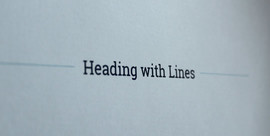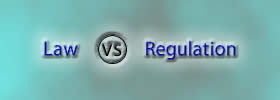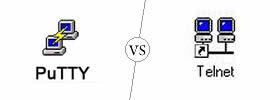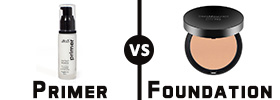Difference Between Heading and Headline
Key Difference:A heading is a word, expression, or sentence toward the start of a composed section that clarifies what it's about. A heading is fundamentally the same as a title. A heading implies a line of words imprinted in extensive letters as the title of a story in a paper or the primary concerns of the news that are communicated on TV or radio.
 Heading
Heading
A heading is like a subtitle, a line beneath a photo that quickly clarifies it. Headings appear at the highest point of sections, parts, or pages, and they give you a thought of what the subject is. You may compose a heading for every section of your novel, or on each page of your French club bulletin. The 1300's significance of heading was "beheading," and it wasn't until the late 1800's that it came to signify "title."
The word heading differs in its meanings.
- A title at the head of a page or section of a book.
‘chapter headings’
- A division of a subject; a class or category.
‘this topic falls under four main headings’
- A direction or bearing.
‘he crawled on a heading of 90 degrees until he came to the track’
- A horizontal passage made in preparation for building a tunnel.
‘A top heading is first excavated, and then a bench that is sometimes split further into bench and invert sections is constructed.’
- A strip of cloth at the top of a curtain above the hooks or wire by which it is suspended.
There are three types of headings:
1.Question Headings:
An question heading, is a heading written in the interrogative case. A question heading like "What is the job of an online life official" directs a reader’s attention since it infers that the text that follows the heading will answer that question.
Question headings are helpful in substance that fills in as an informational source, for example, an instructional methodology, an investigating guide, or a site's FAQ (as often as possible made inquiries) page. They are additionally powerful if there should arise an occurrence of increasingly subjective data when the aim is to extend perusers' learning, for example, headings that ask the contrast between different political frameworks, religions, or rationalities.
2.Statement Headings
Statement headings are ideal for direct substance where question headings don't fit. They express a reality or a feeling, and they signal that the content following them will give details that support that fact or argue on that opinion.
Newspaper headlines are the model for this form: "Social Media Executives are the new thing" is a case of a statement heading.
3.Topic Heading
Topic headings are the most formal; but also, the most convenient and comfortable one for both the writer and their readers. But sometimes they’re so vague that they just aren’t helpful. In case of headings like “General,” “Application,” and “Scope” it might get vague and end up confusing the user. For example, the heading ‘Application ‘does not give a clear meaning as to what it intends to say. The heading might mean an application for a job or an application for leave.

A headline is the title of a newspaper story, imprinted in substantial letters at the top of the story, particularly on the first page. Likewise, the main points of the news which are read on radio or TV. Large type first page headline did not come into utilization until the late nineteenth century when expanded challenge between papers prompted the utilization of attention-getting headlines.
A headline's purpose is to rapidly and quickly attract attention regarding the story. The most vital story on the front page above the fold may have a larger headline if the story is unusually imperative.
Headline also means:
- If someone headlines a show, they are the main performer in it.
The band are headlining the festival's Saturday programme.
- A line at the top of a page in a book, giving the running title, page number.
- to publicize highly.
Primarily there are four kinds of headlines:
1. Flush Left Headline
This is the cutting edge feature frame being used comprising of a few lines of feature, every one set to one side of the space. The plan is straightforward and permits opportunity recorded as a hard copy the feature. The purpose behind the prominence of this sort of feature is a direct result of its simplicity recorded as a hard copy, permits adaptability in unit check and gives a sentiment of airiness to the page with the blank area.
2.Banner Headline
Pennant features are not utilized very as often as possible but rather have a critical effect when utilized. They are words imprinted in additional vast letters over the highest point of the first page of the paper for critical stories.
3.Inverted Pyramid Headline
Among all altered pyramid feature style for news composing has an unmistakable favorable position, particularly for individuals who are in a surge and only occasionally have sufficient energy to peruse each expression of a story. The preferred standpoint for this situation is that the feature focuses on introducing relevant certainties first. With upset pyramid stories, the most imperative data goes in the primary section, and the less essential data pursues to the very end of the story. The upset pyramid feature by and large comprises of three lines - the main keeps running over the segment and the other two lines are shorter than the primary line. The feature is made from the instructive actualities exhibited toward the beginning of the story, giving the peruser the most essential focuses rapidly.
4.Cross-Line Headline
The cross-line feature is very like a flag feature. While it is an expansive feature, it doesn't traverse the whole width of the page, yet it runs over every one of the segments of the story it relates to. The cross-line feature is one of the most straightforward kinds of features, comprising of a solitary line and at least one sections in width. It can run flush on the two sides of the paper or it can have the words focused over the sections. This sort of feature is commonly utilized when there is more than one section for a story and to create a formal look. (Devon Willis)
|
|
Heading |
Headline |
|
Definition |
|
|
|
Types |
1.Question Headings 2.Statement Headings 3.Topic Heading |
1.Flush Left Headline 2.Banner Headline 3.Inverted Pyramid Headline 4.Cross-Line Headline |
|
Synonym |
Caption, head, header, rubric, title. |
Name, caption,label,legend, inscription. |
Image Courtesy:vclever.com,nglish.com









Add new comment